Students who want to get into the elite of Navodaya Vidyalayas must prepare for the JNV Class 11 Lateral Entry Selection Test and should look for the JNVST Class 11 Syllabus. To do well on the test, you need to know everything there is to know about the course material and how it is organised. This article will give you a full picture of the JNV Class 11 curriculum, focusing on each subject and the themes that go with it.
JNVST Class 11th Exam – Explained
| Name of the examination | Jawahar Navodaya Vidyalaya Selection Test (JNVST) Class 11th |
| Article Category | JNVST |
| Exam Type | NVS Entrance Exam |
| Conducting Authority | Navodaya Vidyalaya Samiti |
| Admission to Class | XI |
| Mode of examination | Offline (OMR-based) |
| Date of Examination | To be announced |
| Examination centre | Pan India |
| Medium of examination | Hindi & English |
Weightage of the Marks in Navodaya JNVST Class 11 Exam
| Subject | Number of Questions | Marks | Approximate Time |
| Mental Ability | 20 | 20 | 30 Minutes |
| English | 20 | 20 | 30 Minutes |
| Science | 20 | 20 | 30 Minutes |
| Social Science | 20 | 20 | 30 Minutes |
| Mathematics | 20 | 20 | 30 Minutes |
| Total | 100 | 100 | 2 Hours 30 Minutes |
Subjects of JNVST Class 11 Syllabus
- Mental Ability
- English (Grammar & Reading)
- Science
- Social Science
- Mathematics
Mental Ability Syllabus for JNVST Class 11 Exam
The Mental Ability part of the JNV Class 11 curriculum tests how well students think logically and analytically. There are 20 multiple-choice questions from the Mental Ability section, each worth one point. There are a total of 20 points. This part talks about the following:
Pattern Completion
Example question of Pattern Completion:

Figure Series Completion
Example question of Figure Series Completion:
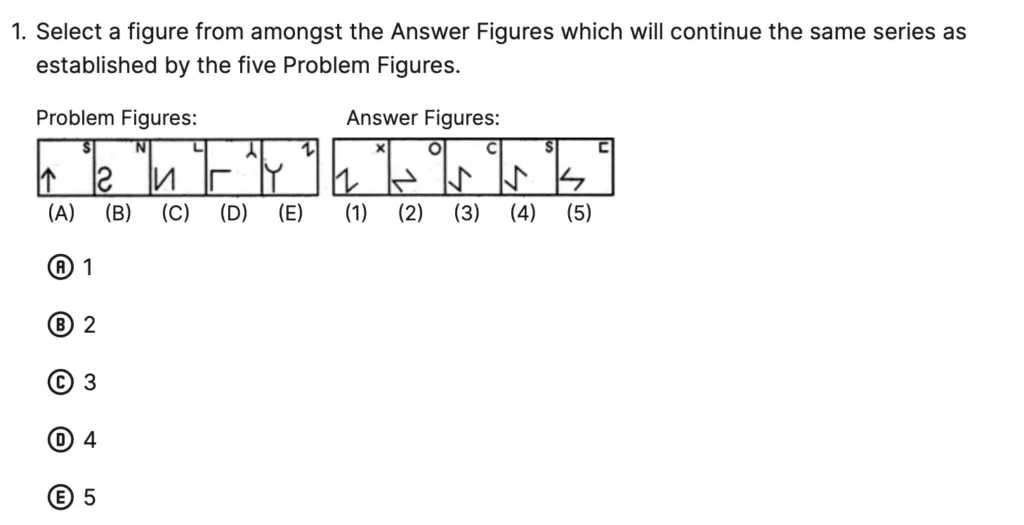
Geometrical Figure Completion (Triangle, Square, Circle)
Example question of Geometrical Figure Completion (Triangle, Square, Circle):
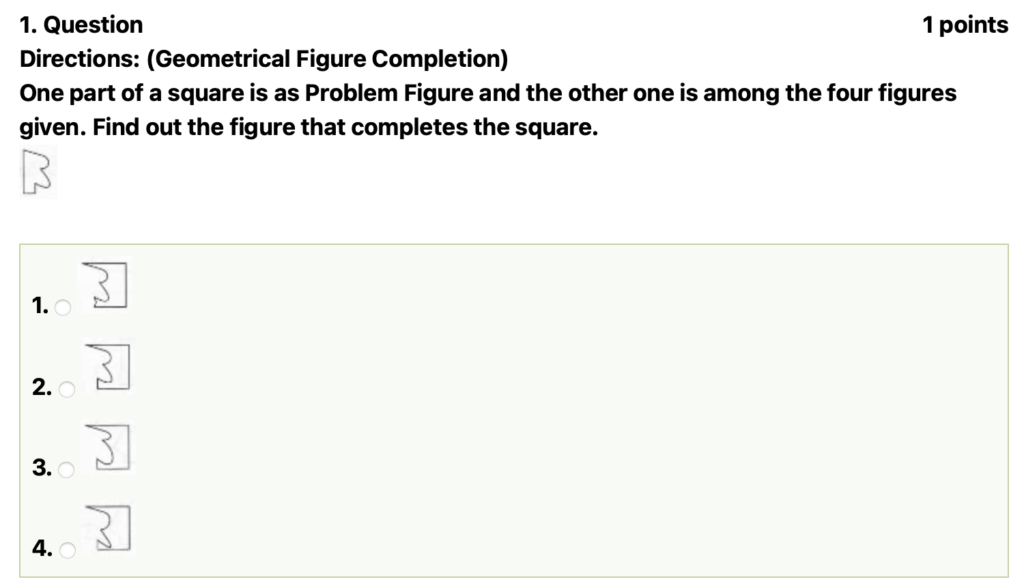
Mirror Imaging
Example question of Mirror Imaging:
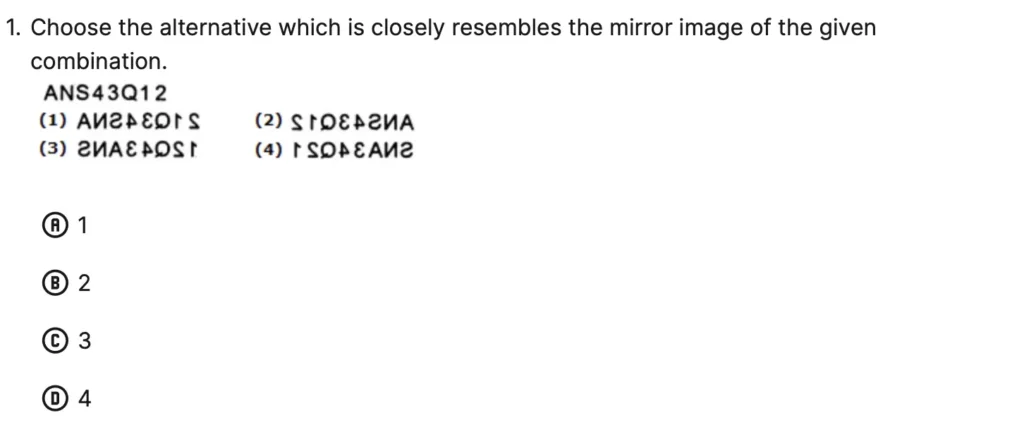
Punched Hole Pattern (Folding/Unfolding)
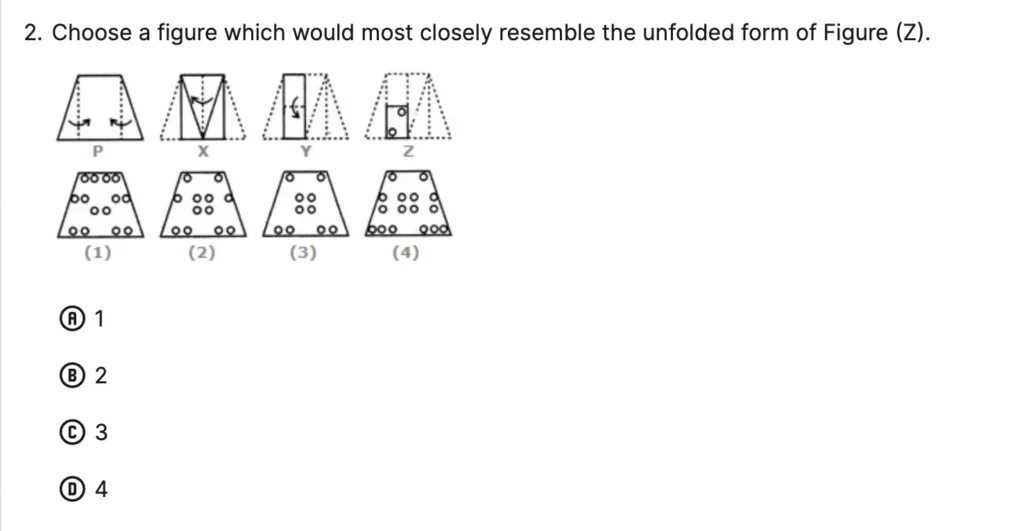
Example question of Punched Hole Pattern (Folding/Unfolding):
Calendar, Time, and Clock
Example question of Calendar, Time, and Clock:

Embedded Figure
Example question of Embedded Figure:
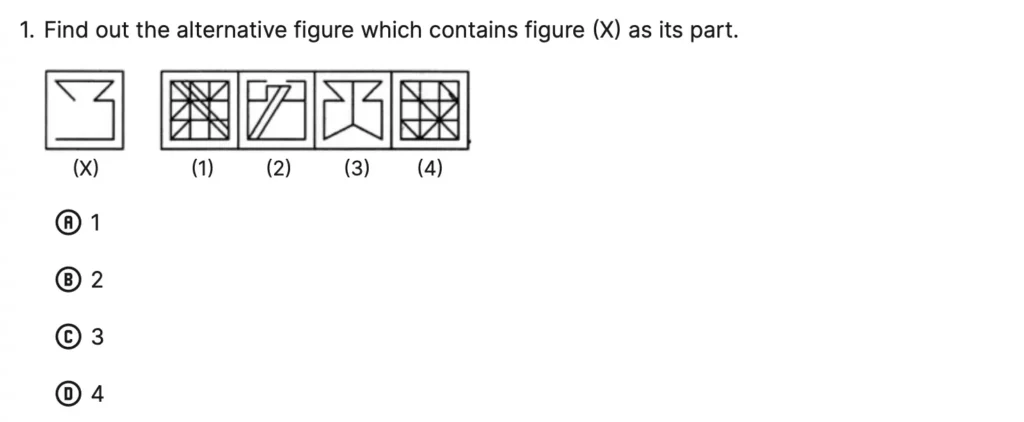
Coding-Decoding
Example question of Coding-Decoding:

Orientation/Direction
Example question of Orientation/Direction:

Space Visualization
Example question of Space Visualization:
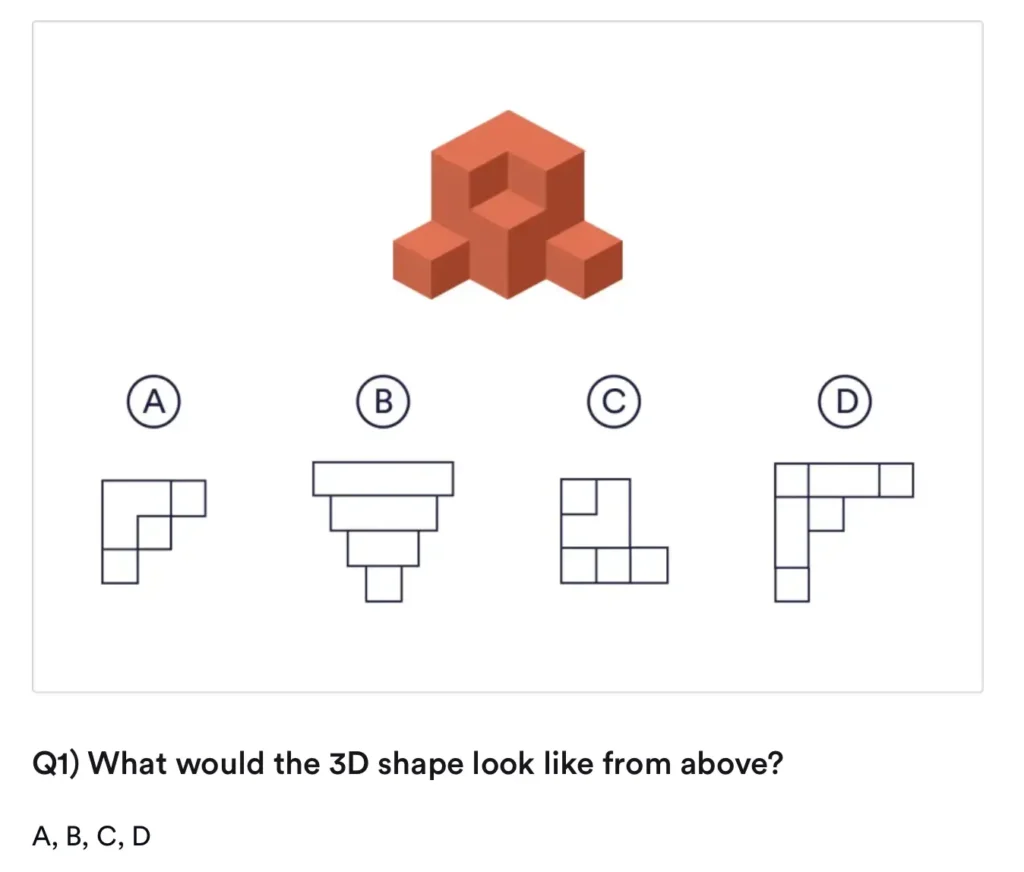
Students should focus on learning these subjects to improve their thinking and problem-solving ability.
English Syllabus for JNVST Class 11 Exam
The English part of the JNV Class 11 curriculum is meant to test students’ ability to understand what they read and use language correctly. There are two parts to it: Part A is Reading Skills (10 points) and Part B is Grammar (10 points). Let’s look at the structure of the lesson in more depth:
Section A: Reading Skills
This part tests students’ reading comprehension skills by giving them pieces they haven’t seen before. The passages can be conversational or case-based, including graphs, statistics, or other visual aids.
Section B: Grammar
The grammar part tests how well students understand different types of grammar. Some things discussed include tense, modal, subject-verb agreement, reported speech (such as directions, requests, statements, and questions), determiners, spelling, and syntax. It is important to use correct spelling, punctuation, and language for the situation.
Students who want to do well in the English section should work on their grammar and do reading comprehension activities.
Mathematics Syllabus for JNVST Class 11 Exam
Maths is an important subject in the JNVST Class 11 syllabus, and there are 20 multiple-choice questions worth 20 marks in this topic. The structure of the course is broken up into several parts, which are:
Unit 1: Number Systems
Real numbers, the basic theorem of arithmetic, irrational numbers, and how to prove them are some of the things that this unit talks about.
Unit 2: Algebra
The students will be taught different equations, including pairs of linear equations in two variables, quadratic equations, and math progressions.
Unit 3: Coordinate Geometry
This unit is mostly about coordinating geometry, plots of linear equations, distance formulas, and section formulas.
Unit 4: Geometry
Triangles, circles, tangents, and the features of similar triangles are some of the things that this unit covers.
Unit 5: Trigonometry
Students will learn about trigonometric formulas, ratios, heights, and distances and how to use these concepts in real life.
Unit 6: Mensuration
This unit is about the sizes, surface areas, and areas of circles and other geometric shapes.
Unit 7: Statistics and Probability
The ideas of mean, median, mode, and chance will be taught to the students.
To do well in maths, students need to practise answering different kinds of problems and fully grasp the ideas behind them.
Science Syllabus for JNVST Class 11 Exam
There are three main topics in the Science part of the JNV Class 11 syllabus: Materials, The World of Living Things, and Natural Phenomena 1. Let’s go into more information about each theme:
1. Materials
In the JNV Class 11 curriculum, Science is broken down into three main areas: Materials, The World of Living Things, and Natural Phenomena. Let’s look into each theme in more depth:
2. The World of the Living
This theme includes how animals and plants live, control and work together, breeding, inheritance, and evolution.
3. Natural Phenomena
Students will study how light bends and reflects the human eye, electricity, magnetism, and natural resources such as minerals, water, wood, and energy.
The Science part aims to see how well students understand scientific ideas and how they can be used in real life.
Social Science Syllabus for JNVST Class 11 Exam
Social Science is an important part of the JNV Class 11 curriculum because it teaches students about India’s history, geography, economy, and government. India and the Contemporary World – II and Contemporary India – II comprise the course outline’s two parts. Let’s look at the structure of the lesson in more depth:
Unit 1: India and the Contemporary World – II
This unit is all about what happened and how it led to the rise of nationalism in India and Europe. It talks about the French Revolution, how nationalism grew in Europe, the First World War, the drive against cooperation, and other things.
Unit 2: Contemporary India – II
This unit examines resources and growth, water resources, agriculture, minerals and energy resources, transportation, the Indian economy, and protecting forests and wildlife.
Unit 3: Democratic Politics – II
In the third unit, we’ll learn about gender, religion, caste, political groups, sharing power, and the results of democracy.
Unit 4: Understanding Economic Development
This unit is about what growth means, the different parts of the Indian economy, money and credit, globalisation and how it affects the Indian economy, and the things that keep it going.
Indian students can learn a lot about the country’s culture, economy, and politics by studying social science.
Integrating Modern Learning Tools for JNVST Class 11 Preparation
In today’s digital age, students preparing for the JNVST Class 11 exam can enhance their study routine by using modern educational tools. With the rise of e-learning platforms, interactive apps, and online mock tests, candidates can now access high-quality resources anytime, anywhere. These tools offer personalized learning experiences, allowing students to focus on weak areas, track progress, and simulate real exam environments. Incorporating such digital tools into regular study plans not only improves time management but also boosts confidence leading up to the exam. For a more immersive preparation, students can engage in online study groups or forums to exchange knowledge and strategies.


It is useful to 10th class students.
It’s very usefull and important for lateral entry selection test for JNV
Thanks to jnvstprep.com
Yes
Plz we need the more important about this
Hi Samiksha,
What information you want from us? Please let us know. We will try to solve your problems.
Mental ability full slabus
Can I get the previous year question papers or sample paper for these exam
Hlo
Do class 10th marks matter in lateral selection test (lest) of class 11?
Yes, Admission to Class 11 in Jawahar Navodaya Vidyalaya (JNV) is primarily based on a student’s performance in Class 10.
Want details of syllabus for class 11
This is the complete syllabus and after preparing this one can easily Crack the JNVST exam
“Just like me”
I also cracked this exam with the same syllabus as mentioned above
Yes
Ok